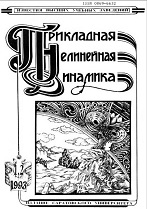|
This article is cited in 1 scientific paper (total in 1 paper)
NONLINEAR DYNAMICS AND NEUROSCIENCE
Cycles-canards and torus-canards in a weakly inhomogeneous ensemble of FitzHugh–Nagumo neurons with excitatory synaptic couplings
A. A. Makeeva, A. S. Dmitrichev, V. I. Nekorkin
Institute of Applied Physics, Russian Academy of Sciences, Nizhny Novgorod
Abstract:
The purpose of this work is to study the dynamics of a weakly inhomogeneous ensemble of three FitzHugh–Nagumo neurons with excitatory synaptic couplings. To single out main types of canard solutions of the system and obtain the regions in parameter space the solutions exist in. Methods. In this paper the dynamics of autonomous systems are studied by using methods based on geometric singular perturbation theory. To study the dynamics of non-autonomous systems we develop an approximate approach and use numerical methods such as obtaining of Poincare maps. Results. The dynamics of the second neuron was studied analytically provided that the first neuron is at rest. The existence of solutions corresponding to different types of periodic oscillations, including canard ones, was shown. To study non-autonomous system, describing the dynamics of third neuron, the approach based on construction of auxiliary autonomous system was developed. It was shown that in the system there exist different types of invariant torus, including canard ones, corresponding to the regimes of various subthreshold and spiking quasi-periodic oscillations of the third neuron. Torus-canards were discovered corresponding to various types of subthreshold-spiking oscillations. Conclusion. The dynamics of a weakly inhomogeneous ensemble of three FitzHugh–Nagumo neurons, the depolarization levels of which linearly increase with their index, and connected in series through chemical synapses, is considered. It was shown that the existence of torus-canards with simple and complex shape is possible in the ensemble. The torus-canards with simple shape correspond either to subthreshold or to spiking oscillations of the ensemble neurons. On the other hand, the torus-canards with complex shape correspond to the regimes of complex subthreshold-spiking oscillations.
Keywords:
bifurcations, synchronization, torus-canards, inhomogeneity, neural networks.
Received: 20.06.2020
Citation:
A. A. Makeeva, A. S. Dmitrichev, V. I. Nekorkin, “Cycles-canards and torus-canards in a weakly inhomogeneous ensemble of FitzHugh–Nagumo neurons with excitatory synaptic couplings”, Izvestiya VUZ. Applied Nonlinear Dynamics, 28:5 (2020), 524–546
Linking options:
https://www.mathnet.ru/eng/ivp392 https://www.mathnet.ru/eng/ivp/v28/i5/p524
|

| Statistics & downloads: |
| Abstract page: | 121 | | Full-text PDF : | 56 |
|




 Contact us:
Contact us: Terms of Use
Terms of Use
 Registration to the website
Registration to the website Logotypes
Logotypes








 Citation in format
Citation in format 
